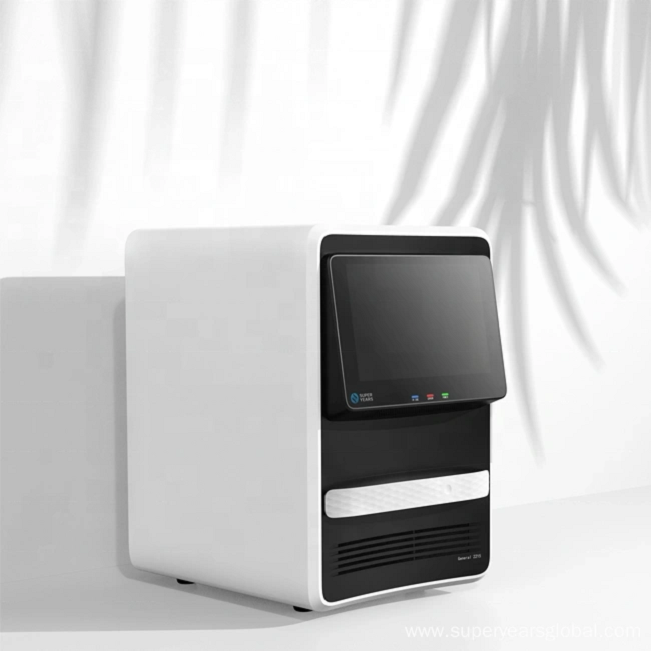The Specification of Real-Time PCR Instrument
September 23, 2023
The specifications of a Real-Time PCR Instrument can vary depending on the manufacturer and model. However, some common specifications include:
1. Thermal Cycling System: Real-time PCR instruments have a thermal cycling system that controls temperature changes during the PCR process. This system typically consists of Peltier elements or resistive heaters to rapidly heat and cool the reaction mixtures.
2. Sample Capacity: Real-time PCR instruments have a certain number of sample wells or reaction tubes in which the PCR reactions are performed. The sample capacity can range from a few wells (e.g., 24 or 48 wells) to higher capacities (e.g., 96, 384, or even 1536 wells) in high-throughput systems.
3. Temperature Range: The temperature range of real-time PCR instruments typically includes the necessary temperatures for PCR, such as denaturation (usually around 95°C), annealing (typically 50-60°C), and extension (between 72-80°C). The temperature range can vary depending on the specific instrument.
PCR System Display
4. Temperature Uniformity: Real-time PCR instruments should provide precise temperature control and uniformity across all sample wells. This ensures consistent and accurate results.
5. Fluorescence Detection: Real-time PCR instruments detect the amplification of DNA or RNA during the PCR process by measuring fluorescence emitted by fluorescent labels, such as fluorescent dyes or probes. The instrument should be equipped with appropriate detectors to measure fluorescence signals accurately.
6. Excitation and Emission Filters: Real-Time PCR instruments usually have a range of excitation and emission filters to accommodate different fluorescent dyes or probes used in specific PCR assays.
7. Dynamic Range: The dynamic range of a real-time PCR instrument refers to the range of template concentration over which it can accurately measure the amplification signal. A broad dynamic range allows for precise quantification of both high and low-abundance targets.
8. Sensitivity: The sensitivity of a real-time PCR instrument determines its ability to detect low-abundance targets. It is influenced by factors such as the number of PCR cycles that can be performed, the signal-to-noise ratio, and the efficiency of fluorescent signal detection.
9. Software: Real-time PCR instruments are typically accompanied by software that controls instrument operation, collects and analyzes data, and enables the interpretation of results. The software may have additional features, such as data export options and advanced data analysis tools.
These specifications are important considerations when choosing a real-time PCR instrument, as they affect the instrument's performance, versatility, and suitability for specific applications.






